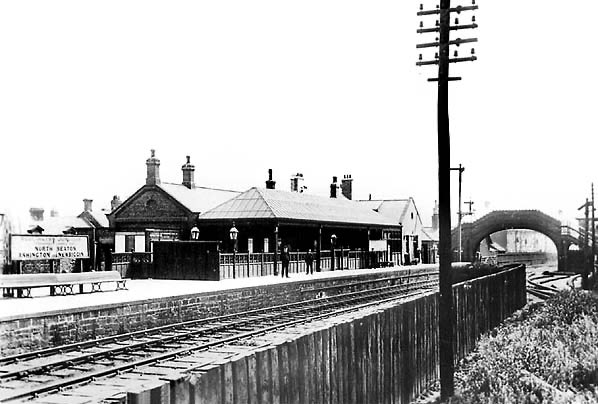
Bedlington, Northumberland
Bedlington Railway Station
Last Updated:
22 Jan 2025
Bedlington, Northumberland
This is a
Railway Station
Station Rd, Bedlington NE22
Founded in
Current status is
Extant
Designer (if known):

Due to reopen in 2025
It’s all change at Bedlington Station these days, and I managed to get an ace shot of the works and original platform from the signal box & junction between Lynemouth and Choppington.
When the station was opened in 1844, there was barely any settlement around it - just the colliery and the small village of East Sleekburn eastwards. Hence today, Bedlington is effectively two distinct settlements - one medieval and one industrial much like many in the region.
This fact also meant it was fairly modest upon opening, and restricted expansion going forwards. It was only ever one through platform, but featured a terminating platform for trains to and from Newbiggin when that branch was opened in 1872.
It was the 3rd busiest station on the Blyth & Tyne, with over 200,000 passengers in 1911 and only Blyth and Ashington topping it. The route to Morpeth was originally the mainline instead of Ashington, so it was a principal interchange for folk wanting to swap services. Such traffic drove the platform facilities to expand with a lovely platform verandah, ticket office and waiting rooms.
Though the shipment of coal remained strong through the 50s and 60s, Bedlington suffered from the bus curse especially when we considered its proximity to the town centre itself. Buses were increasingly faster, more frequent and cheaper so it made little sense for British Railways to continue losing money. Eventually the station closed in 1964.
Today though, with the increase of congestion and restrictive bus services the station is about to open once more. I don’t think the original station building is being put to use, but once again we’ll see passenger units stopping here in the very near future which I’m really excited about. Watch this space I guess!
Listing Description (if available)


On the 2nd edition above, Bedlington Station is an entirely distinct area to the original village of Bedlington, hinting at the modern day contrast between the two also.
This side was built around the colliery itself, with houses specifically constructed for the miners.

By 1924, Sleekburn was transitioning into a bart of Bedlington itself due to the long reaching terraces enclosing on the village. The area started to gain its own amenities also at this point, such as a picture theatre, schools and a recreation ground.

Bedlington Railway Station in December 2024

Bedlington Station in 1971. A DMU on a railtour from Newcastle via Tynemouth and Backworth. The area is a tapestry of signal gantries, points and semaphores.
Source: J C Dean on Disused Stations

Bedlington Station around 1905. Source: Disused Stations
